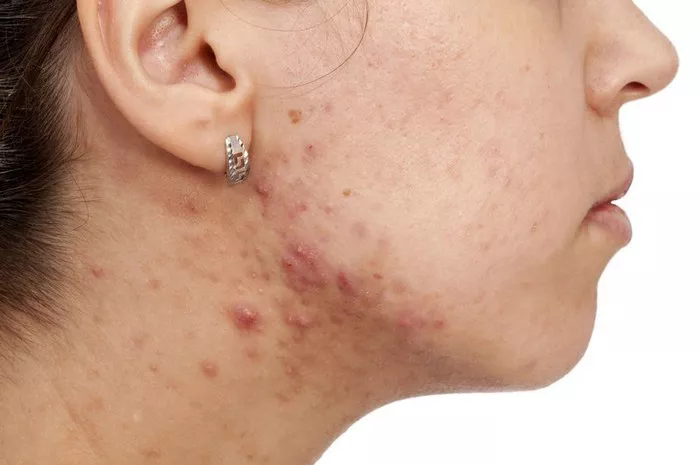The bacteria and fungi residing on our skin play an essential role in maintaining skin health. As research continues to highlight the importance of these microorganisms, the question arises: Can we enhance their effects with probiotics?
The skin is home to a diverse array of microbes, and these “good” bacteria offer numerous benefits. By occupying space on the skin’s surface, they help protect against harmful pathogens, assist in wound repair, and may even mitigate the damaging effects of UV rays. This has led to a growing interest in the skin’s microbiome, the community of microorganisms living on our skin, and how to nurture it.
One method gaining traction is the use of topical probiotics — the application of live bacteria directly to the skin. Although the concept dates back to 1912 when scientists experimented with applying bacteria to treat conditions like acne and seborrhea, the practice is now being revisited with the rise of modern skincare products. Today, various skincare brands offer products like serums, cleansers, and moisturizers marketed as “probiotics,” claiming to balance and refresh the skin microbiome.
However, many of these “probiotic” products do not actually contain live bacteria. Instead, they often include prebiotics (nutrients that support the growth of good bacteria) or postbiotics (substances produced by beneficial bacteria). The lack of live bacteria is largely due to the challenges of maintaining bacteria throughout the manufacturing and storage process. Even if live bacteria were applied to the skin, there is no guarantee they would thrive, given the competition from the millions of microbes already inhabiting the skin.
The Challenge of Probiotic Skincare
Richard Gallo, a dermatologist at UC San Diego School of Medicine, explains that skincare products are classified as “cosmetics,” which means they don’t undergo the same rigorous testing as pharmaceuticals. This regulatory difference allows manufacturers to make claims about probiotics without the need for extensive clinical trials.
Despite the challenges, there is promising research. Bernhard Paetzold, co-founder of S-Biomedic, points out that while live bacteria are difficult to use in skincare, ongoing studies are exploring ways to manipulate the skin microbiome for better health outcomes.
The idea behind probiotic skincare is rooted in the theory that beneficial bacteria on the skin act as a protective barrier, preventing harmful microbes from taking hold. However, the science behind how specific “bad” bacteria contribute to skin diseases remains under investigation. Conditions like eczema, rosacea, acne, and psoriasis are all associated with imbalances in the skin microbiome, but it is unclear whether these bacterial shifts are a cause or a result of the disease.
What the Research Shows
To establish whether a specific bacterium is causing a disease, researchers would need to either induce the condition in healthy individuals by applying harmful bacteria or cure it by introducing beneficial bacteria. While the first approach is ethically challenging, some studies are investigating the potential of good bacteria to treat skin conditions.
In recent clinical trials, live bacteria have shown promise in treating eczema, particularly in reducing the presence of Staphylococcus aureus, a harmful bacterium that often dominates the skin of individuals with eczema. Gallo’s research team, for example, is investigating Staphylococcus hominis, a bacterium that naturally occurs in healthy skin but is rare in eczema patients. Their studies have demonstrated that this bacterium can produce antimicrobial peptides that help to eliminate S. aureus and reduce inflammation associated with eczema.
A phase one trial involving 54 adults with eczema showed that applying a cream containing S. hominis significantly reduced S. aureus colonization and alleviated symptoms such as redness and itching. While promising, further trials are necessary to confirm these findings and determine the long-term effectiveness of such treatments.
Other studies have explored different bacterial strains. For example, a 2003 trial used Streptococcus thermophiles to improve the skin barrier in eczema patients by increasing the production of ceramides, lipids that help keep the skin hydrated. More recently, a 2018 study using Roseomonas mucosa bacteria from healthy volunteers showed that it improved eczema symptoms in patients by more than 50% over 16 weeks.
The Potential for Acne and Other Skin Conditions
While eczema has been the primary focus of probiotic skin research, other skin conditions are also being explored. Acne, for example, is linked to Cutibacterium acnes, a bacterium that thrives in clogged pores. Researchers are investigating ways to use probiotics to inhibit the growth of C. acnes. One clinical trial showed that a lotion containing Enterococcus faecalis reduced acne pustules compared to a placebo.
Paetzold’s company, S-Biomedic, conducted a trial in 2019 testing a cream with specific strains of C. acnes. The results indicated some reduction in acne lesions, although more research is needed to fully understand the impact of probiotics on acne.
Additionally, Gallo is investigating whether Staphylococcus capitis, a bacterium that shows promise in animal models, could become a treatment for acne by targeting C. acnes without disturbing the rest of the skin microbiome.
Looking to the Future
While probiotics have demonstrated potential in treating certain skin conditions, there is still much to learn. Some researchers are also exploring the role of prebiotics and postbiotics in general skin health. For example, inulin, a fiber found in cosmetics, has shown promise as a prebiotic that may enhance the skin’s texture and provide a favorable environment for beneficial bacteria.
However, to solidify the efficacy of these products, larger and more rigorous randomized controlled trials are necessary. A recent review of available studies concluded that while probiotics may be effective in treating inflammatory skin conditions and promoting wound healing, more research is needed to confirm their benefits.
A Word of Caution
While the potential for probiotics in skincare is exciting, Gallo cautions consumers against relying on the probiotic creams currently available on the market for general skin health. There is limited evidence to suggest that these products will significantly improve skin appearance or prevent wrinkles, and many are not backed by strong scientific research.
For those looking to support their skin’s microbiome, Gallo recommends focusing on basic skincare practices, such as moisturizing and protecting the skin from UV damage, which naturally create an environment conducive to the growth of beneficial microbes.
Conclusion
The science of probiotics in skincare is still evolving, and while early research shows promise, more trials are needed to confirm their benefits. For now, people with specific skin conditions like eczema may find relief in probiotic-based treatments, but for general skin health, traditional skincare practices remain the most reliable approach.
Related topics



























